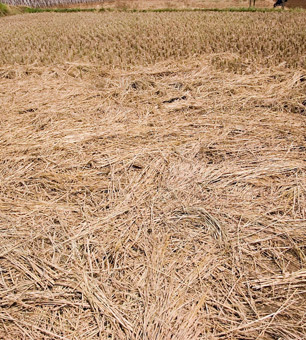Nearly one in five Americans could not afford the food they or their families needed at some point in the past year, and now anti-poverty advocates are pressing Congress to abandon proposed food stamp cuts as a historic drought threatens to drive up food prices across the country.
A Gallup poll released this week shows that 18.2 percent of Americans did not have enough money to buy the food they or their families needed at least once during the past year. In 15 states, at least 1 in 5 Americans polled in the first half of 2012 reported struggling to pay for food during the past 12 months.
Little has changed since 2011, when 18.6 percent of Americans reported struggling to afford food, but proposed food stamp cuts in Congress and the worst drought in half a century could soon make matters worse.
The drought has impacted 80 percent of the country’s agricultural lands, and the US Department of Agriculture predicts that consumers will see meat and dairy prices increase within two months. Increases in the cost of packaged products, such as cereal, containing corn and flour are expected in about 10 to 12 months.
The rate of Americans facing food hardship peaked in late 2008 as the economy fell into a deep recession. The rate spiked from 16.3 percent in the first quarter of 2008 to 19.5 percent in the last quarter.
Congress Considers Cutting Food Stamps
With millions of Americans struggling to stave off hunger, anti-poverty groups are asking that Congress abandon proposals to cut off support for the Supplemental Nutrition Assistance Program (SNAP), which supplies assistance commonly called food stamps.
“The numbers underscore the point that people still continue to struggle, and that cuts some in Congress are proposing to our nation’s nutrition safety net will only worsen a bad situation,” said Jim Weill, president of the Food Research and Action Center.
Click here to support news free of corporate influence by donating to Truthout.
SNAP funding is included in the 2013 omnibus agriculture appropriations bill. The Senate version would cut $4.4 billion over ten years and would cause about 500,000 households to lose an average of $90 in nutritional assistance each month.
SNAP cuts in the House version, which seeks about $16 billion in SNAP reductions, would make the same cuts and change eligibility requirements to push at least 1.8 million people out of the food stamp program.
“These cuts to SNAP will particularly harm seniors, children and working families, taking food away from the poorest and most vulnerable among us,” Weill said, echoing concerns shared by the White House and Democrats in Congress.
The White House opposes the deep SNAP cuts proposed in the House, which are largely supported by Republicans eager to cut domestic spending.
The number of participants in SNAP programs has been at a historic high since the recession began, and SNAP spending increased from $30 billion in 2007 to $73 billion in 2011, according to the Congressional Budget Office.
Regional Food Disparity
In general, more people living in Southern states report struggling to pay for food. Mississippi tops the national Gallup list, with 24.9 percent of those polled in the state reporting struggling to pay for groceries during the past year. Alabama, Delaware, Georgia and Nevada join Mississippi as the top five states where people face food hardships.
People living in Southern states will also be hardest hit by increases in food prices due to drought, according to Gallup. People living in the Mountain Plains and Midwest states that make up America’s breadbasket are least likely to face food hardship. North and South Dakota top the list of states where residents are least likely to go hungry.
Despite the troubling data on food hardship, vast amounts of America’s food supply goes to waste. The National Resources Defense Council reported this week that 40 percent of food produced in the United States goes uneaten. That’s about 20 pounds of food per person every month.
Join us in defending the truth before it’s too late
The future of independent journalism is uncertain, and the consequences of losing it are too grave to ignore. To ensure Truthout remains safe, strong, and free, we need to raise $34,000 in the next 72 hours. Every dollar raised goes directly toward the costs of producing news you can trust.
Please give what you can — because by supporting us with a tax-deductible donation, you’re not just preserving a source of news, you’re helping to safeguard what’s left of our democracy.
